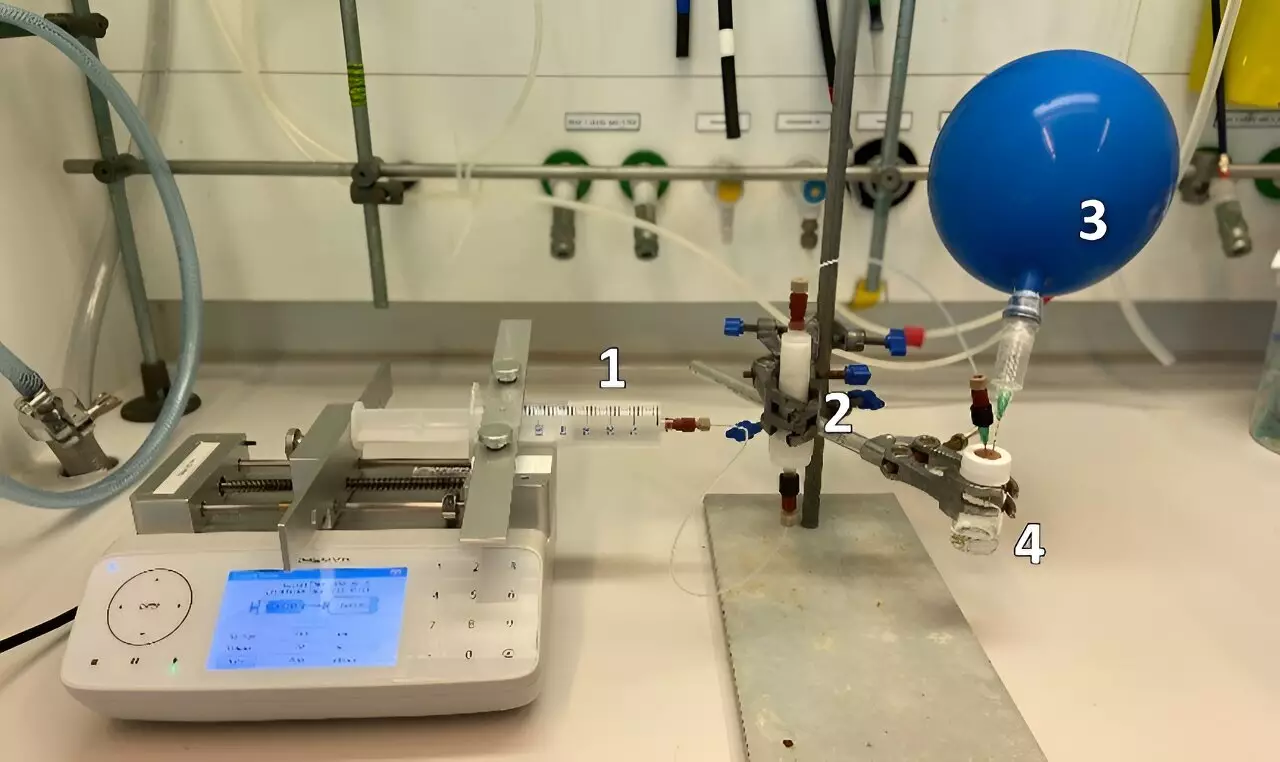Chemists at the University of Amsterdam have recently made a significant breakthrough in the synthesis of molecules containing a trifluoromethyl group attached to a sulfur, nitrogen, or oxygen atom. This innovative method, published in Science, offers a sustainable approach to the production of pharmaceutical and agrochemical compounds, without the use of PFAS reagents. Led by Prof. Timothy Noël, the Flow Chemistry group at the Van ‘t Hoff Institute for Molecular Sciences collaborated with researchers from Italy, Spain, and the UK to develop this environmentally friendly synthesis route.
The trifluoromethyl group (-CF3) plays a crucial role in enhancing the properties of pharmaceutical and agrochemical compounds. It improves hydrophobicity, metabolic stability, efficacy, and reduces the required dose or concentration. Traditionally, the synthesis of molecules with a trifluoromethyl group involved the use of PFAS compounds, which are facing future legislative restrictions. However, the new synthesis protocol presented in the study eliminates the need for PFAS reagents, offering a sustainable alternative.
The researchers employed the principles of flow chemistry to develop this innovative method. By conducting reactions in closed systems of small tubes, they ensured safe and controlled chemistry. This approach also provides greater versatility and flexibility compared to traditional chemical glassware methods. A key advantage of flow chemistry is its ability to produce reactive N–, S–, and O–CF3 anions efficiently, with the cesium fluoride salt serving as the fluorine source.
The paper introduces a versatile microfluidic flow module for generating reactive N–, S–, and O–CF3 anions. These anions are prepared in a packed bed flow reactor containing cesium fluoride salt, leading to high efficiency fluorination of precursors. The surface area of the salt in the packed bed and improved mixing of organic intermediates contribute to the success of the reaction. Importantly, this approach also enhances safety by containing all intermediates within the microfluidic system.
A unique feature of the system is the integration of the anion generating module with a downstream reaction module. In this setup, the N–, S–, or O–CF3 anions react with appropriate substrates to produce pharmaceutical and agrochemical active ingredients. This streamlined platform offers a practical approach for the synthesis of molecules bearing N–, S–, and O–CF3 motifs. By combining both modules, the researchers have created a cohesive system for the derivatization of compounds, with potential applications in drug development.
The development of an environmentally friendly synthesis method for fluorinated compounds marks a significant advancement in the field of chemistry. By eliminating the need for PFAS reagents and incorporating flow chemistry principles, the researchers have paved the way for a more sustainable approach to the production of pharmaceutical and agrochemical compounds. This innovative method not only enhances the properties of drug molecules but also prioritizes safety and sustainability in the production process. The integration of anion generating and downstream reaction modules offers a practical platform for the synthesis of compounds with N–, S–, and O–CF3 motifs, presenting novel opportunities for drug development and synthesis in both academic and industrial settings.


Leave a Reply